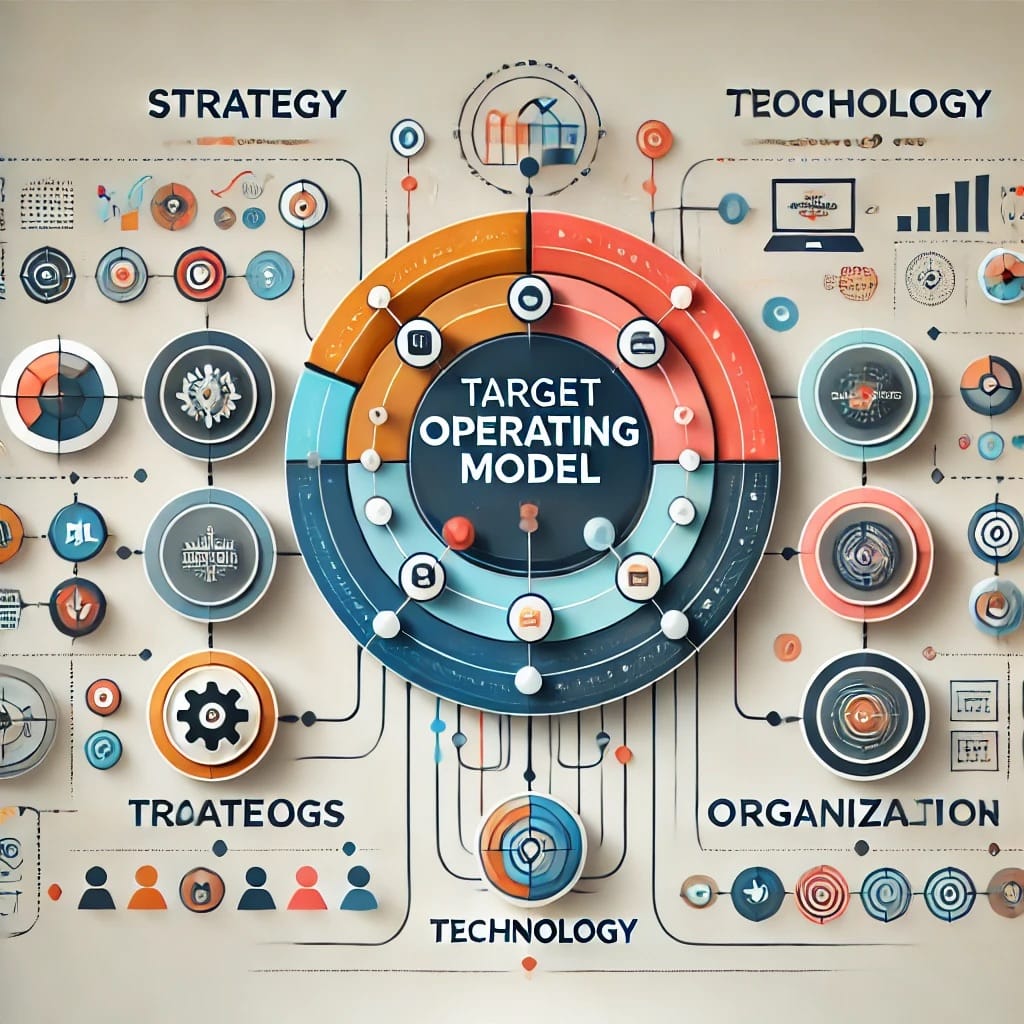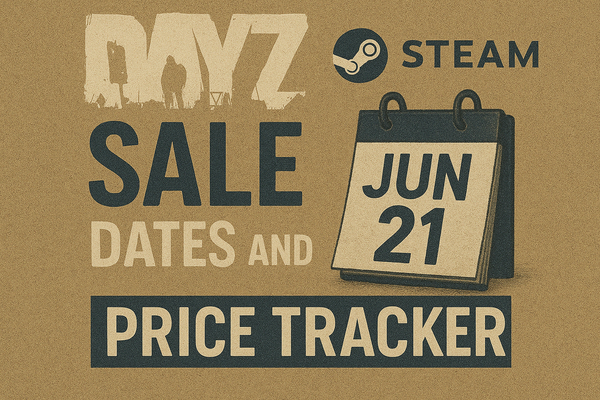Build a Winning Target Operating Model for Your Business
Learn how to create a Target Operating Model template to align your business strategy and operations. Optimize resources and plan for future growth.

Running and growing a business is a dynamic, ever-evolving journey. From startups to major corporations, navigating through new resources, market trends, and strategies can be both exciting and challenging. During this transformation, managers and business analysts may sometimes lose focus on the company’s core objectives and long-term strategy.

This is where the Target Operating Model (TOM) comes in. A well-structured TOM helps align operations with strategic goals, outlining a clear path to achieving business vision and mission.
What Is a Target Operating Model?
A Target Operating Model (TOM) is a strategic tool that guides project managers and teams through the organization’s growth and transformation journey. It defines the desired future state of a business and the steps needed to achieve it, touching on processes, resources, and technology.
Essentially, it serves as a bridge between strategy and execution, ensuring the business operates efficiently while striving for its long-term objectives. The TOM influences the way resources are used, processes are structured, and technology is implemented—regardless of whether the business is a startup or a well-established organization.
A Target Operating Model describes how a business should operate to deliver value, not just what it aims to achieve. It ensures that all efforts are coordinated towards a common strategic goal.
Why Is a Target Operating Model Important?
There are several reasons why a Target Operating Model is crucial for any organization:
- Aligns Strategy and Operations: A TOM ensures that strategic goals are translated into actionable plans, making it easier to apply corporate strategy and meet business objectives.
- Optimizes Resource Allocation: It helps allocate resources efficiently, maximizing impact and minimizing waste.
- Improves Customer Experience: By aligning processes and resources with the business mission, the TOM can enhance the customer journey, leading to higher satisfaction and loyalty.
- Facilitates Change Management: As the business landscape evolves, the TOM provides a framework for managing transitions smoothly and effectively.
- Supports Scalability: For growing businesses, a TOM offers a roadmap to scale operations sustainably.
Operating Model vs. Business Model
While the terms “Operating Model” and “Business Model” are often used interchangeably, they are distinct concepts:
- Business Model: Focuses on what the business offers, including its value proposition, target customers, revenue streams, and cost structure. It’s about designing the business to meet market needs.
- Operating Model: Concentrates on how the business delivers value, encompassing processes, technology, people, and governance. It outlines the strategies needed to execute the business model effectively.
In simple terms, the Business Model defines the what, while the Operating Model defines the how, when, and where. Both are interconnected, with the operating model being essential for implementing and optimizing the business model.
Types of Target Operating Models
There are different types of Target Operating Models, each tailored to specific business needs and stages. Understanding these types can help you choose the right one for your organization:
1. Large Organization Target Operating Model
Designed for well-established companies, this model focuses on maintaining operational efficiency and facilitating communication across departments. It’s often used to manage incremental changes rather than drive major innovation.
Key Features:
- Focus on short-term strategies and operational stability.
- Used to present new processes or organizational changes.
2. Government Organization Target Operating Model
Government entities often require long-term planning, typically over 25 years. These models are heavily structured and data-driven, emphasizing societal impact rather than profit.
Key Features:
- Emphasis on societal goals and public service outcomes.
- Uses S.M.A.R.T objectives and multiple KPIs.
- Long-term strategic planning with broad stakeholder involvement.
3. Start-Up Target Operating Model
Startups face unique challenges, with rapid changes and a constant struggle for survival. A TOM for startups should be flexible and focus on short-term goals, usually not extending beyond 18 months.
Key Features:
- Agile and adaptable to market shifts.
- Short-term planning to accommodate rapid growth or pivots.
- Essential for attracting investors by showcasing a clear strategy.
How to Create a Target Operating Model Template
Creating a Target Operating Model template requires a thoughtful approach, ensuring all business aspects are covered comprehensively. Here’s a step-by-step guide to building your TOM template:
1. Define Business Objectives
Begin by articulating your company’s core objectives. Unlike specific goals, these should reflect your overall mission and vision. Explain why your business exists, what you aim to achieve, and how you want to impact your industry or society.
Include:
- Vision and mission statements.
- Long-term aspirations and values.
2. Outline Your Strategy
Detail the products or services your company offers and the target audience. Specify how your business communicates with customers, including preferred channels and messaging tone. Your strategy should provide a clear path to achieving your objectives.
Include:
- Product/service descriptions.
- Target customer profiles.
- Marketing and communication strategies.
3. Map Out Processes, Information, and Analysis
Identify the processes needed to achieve your strategic goals. Evaluate your current capabilities and determine areas that require improvement. Also, outline how you will gather and analyze customer information to refine your approach.
Focus On:
- Process efficiency.
- Data collection and analysis methods.
- Customer feedback mechanisms.
4. Define Capabilities
Detail the skills, technology, and resources required to bring your strategy to life. This includes software, hardware, and the expertise needed to operate them. Also, outline plans for ongoing skill development and technology upgrades.
Include:
- Key technologies and tools.
- Required skill sets and training programs.
- Plans for future investments in technology.
5. Specify Location Requirements
Determine where your operations should be based to serve your customers effectively. Consider both physical locations and online presence, especially if your business relies heavily on eCommerce or digital marketing.
Include:
- Physical office or retail locations.
- Online presence and digital strategy.
- Logistics and distribution networks.
Where to Create a Target Operating Model Template
Microsoft PowerPoint is a popular choice for creating TOM templates, thanks to its versatile features and ease of use. PowerPoint allows you to build visually appealing slides that can be presented to stakeholders and team members.
If you don’t have access to Microsoft Office, consider purchasing a Microsoft Office 2021 Professional Plus Key from RoyalCDKeys. This cost-effective solution gives you access to Word, Excel, PowerPoint, and other essential tools.
Affordable Microsoft Office Licenses
- Microsoft Office 2021 Professional Plus Key - Phone Activation: €3.99
- Microsoft Office 2021 Pro Plus Product Key: €24.50
- Office 2021 Home and Business Mac CD Key: €55.00
Ready-to-Use PowerPoint Templates
To save time, you can use pre-designed templates that can be easily customized to fit your business needs. Here are some options:
Template 1: Comprehensive TOM Template
Organized by color-coded sections, this template is suitable for all business types.
Template 2: Detailed Activity-Based Template
Ideal for companies with multiple teams and complex organizational structures.
Template 3: Simple Function-Based Template
Designed for straightforward projects, with clear categories for easy management.
Conclusion on Target Operating Models
A well-crafted Target Operating Model is vital for aligning your business strategy with operational execution. It ensures that your company remains focused on its mission while adapting to market changes and optimizing resources.
While creating a TOM might seem complicated, following a structured approach can simplify the process. Be sure to cover every aspect of your business, from strategy to capabilities, to develop a model that drives growth and efficiency.
Now that you have a complete understanding of TOMs, it’s time to create your own and lead your organization toward its goals. A clear and effective operating model can be the key to your business’s long-term success.
Source: How to Create a Target Operating Model Template for Your Business
Explore our newest blog on the topic: 4 Pros and Cons Templates to Help You Make Better Choices





